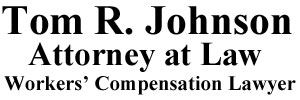The combination of a vague statute (that clearly states it can be rebutted) and the administrative failure to clarify it’s meaning by regulation, has left California’s seriously injured workers in a quandary of not being able to rebut the schedule when their loss of earning capacity greatly exceeds what results from the application of the schedule.
The legislature did authorize the Administrative Director of the DWC to develop a schedule for ratings. In addition, the legislature specifically stated the schedule was presumptive, allowing for rebuttal. How to successfully exercise that rebuttal right is the part that is utterly unclear in the statute, and not clarified by the schedule due to the use of privileged data.
The schedule relies on lawfully secret data, so it’s underpinnings cannot be rebutted directly. And, the statute, without further explanation, is so vaguely written that reasonable minds cannot come up with a format to measure damages to rebut the schedule, or prove the actual percentage of permanent disability. Herein lies the due process violation.
The vagueness contained in the statute could be cured by regulatory explanation or judicial interpretation. The Administration has failed to do so thus far, or to amend the schedule to do so, in spite of a legislative mandate to update the schedule every five years. (The 2005 PDRS needed revision in 2010, but such has not occurred.)
If you have been seriously injured or hurt on a job protect your legal rights and call Sacramento workers compensation lawyer Tom R. Johnson at (916) 922-9902, consultation is free.
A judicial definition of permanent disability does exist from Ogilvie vs. City and County of San Francisco(2011) 197 Cal.App.4th 1262, citing Brodie v. Workers’ Comp. Appeals Bd. (2007) 40 Cal.4th 1313, 1320. The definition is offered as: “A permanent disability is one `… which causes impairment of earning capacity, impairment of the normal use of a member, or a competitive handicap in the open labor market.’” (State Compensation Ins. Fund v. Industrial Acc. Com. (1963) 59 Cal.2d 45, 52, 27 Cal.Rptr. 702, 377 P.2d 902.)
 While this judicially explained definition may be accurate in the abstract, it too lacks any clarification of how an injured worker is supposed to prove up or rebut the percentage of disability, especially when also considering the vague definition of an employee’s diminished future earning capacity in Labor Code 4660(c)(2)that it,
While this judicially explained definition may be accurate in the abstract, it too lacks any clarification of how an injured worker is supposed to prove up or rebut the percentage of disability, especially when also considering the vague definition of an employee’s diminished future earning capacity in Labor Code 4660(c)(2)that it,
“…shall be a numeric formula based on empirical data and findings that aggregate the average percentage of long-term loss of income resulting from each type of injury for similarly situated employees. The administrative director shall formulate the adjusted rating schedule based on empirical data and findings from the Evaluation of California’s Permanent Disability Rating Schedule, Interim Report (December 2003), prepared by the RAND Institute for Civil Justice, and upon data from additional empirical studies.”(Id.)
This is the section that amounts to gibberish to injured workers. Since the rules do not notify the people who must comply with the law what circumstances are determinative of meeting the rule, the rules do not pass the first test of due process.
If you have been seriously injured or hurt on a job protect your legal rights and call workers compensation lawyer in Sacramento Tom R. Johnson at (916) 922-9902, consultation is free.
Ogilvie does state the schedule can be rebutted in certain circumstances, such as when a mathematical error is present or when someone is proven to be totally disabled, but Ogilvie does not address how permanent disability can be proven after the schedule has been rebutted, or how to prove rebuttal based on a more severe injury, or a greater affected loss of earning capacity than what underlies the sample data in the schedule. Thus, Ogilvie confirms the schedule creates a rebuttable presumption, but only holds the WCAB’s previous attempt to explain the rebuttal method (3 years post injury earnings compared to other similar workers) was not an authorized rebuttal method.
 The Court of Appeals held, “[a] scheduled rating may be rebutted when a claimant can demonstrate that the nature or severity of the claimant’s injury is not captured within the sampling of disabled workers that was used to compute the adjustment factor…” (Ogilvie, supra.)
The Court of Appeals held, “[a] scheduled rating may be rebutted when a claimant can demonstrate that the nature or severity of the claimant’s injury is not captured within the sampling of disabled workers that was used to compute the adjustment factor…” (Ogilvie, supra.)
But the court left it “to the WCAB in the first instance to prescribe the exact method for such a recalculation that factors the employee’s anticipated diminished earning capacity into the data used by the RAND Institute” Id. The Rand data is, apparently, essential to effective rebuttal. This WCAB method has not been implemented in spite of the legislative mandate that the schedule shall be updated every 5 years. As of this schedule’s inception in 2005, it has not been revised. Nor has the WCAB followed the Ogilvie directive to articulate a valid rebuttal method.
Administrative implementation of a legislative requirement done in secret is void. (Tidewater Marine Western, Inc. v. Bradshaw (1996) 14 Cal.4th 557, 568 -571.) The adjective “Empirical” is defined by American Heritage Dictionary of the English Language as : Relying on or derived from observation or experiment: empirical results that supported the hypothesis: Verifiable or provable by means of observation or experiment: empirical laws.; 2) Guided by practical experience and not theory, especially in medicine. How can an injured worker convince an ALJ that her injury was more severe and resulted in a greater loss of earning capacity than the empirical data considered in the aggregate by RAND, when that empirical data is unavailable to her? It goes without saying that if you cannot compare the data you cannot make any conclusions from comparisons to it. However, the notable flaws mentioned in Ogilvie, would logically lead one to conclude that a close inspection of the data would be significantly probative. While the statute does not state the empirical data shall be made public, it does create rebuttable presumptions from that data.
The fact that the data that forms the basis of the rating schedule is actually prohibited from public review is a result of the regulatory implementation of the schedule which included a choice to rely on a small sampling of actual, privileged cases. The lack of data and the vague statute both fail to inform injured workers what to prove to rebut the regulatory schedule while the statute itself states it is rebuttable. That is why the statute violates due process.
If you have been seriously injured or hurt on a job protect your legal rights and call workers compensation lawyer Sacramento Tom R. Johnson at (916) 922-9902, consultation is free.

